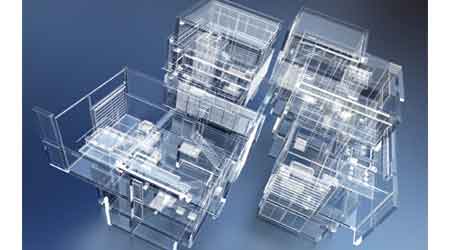Know the 3 Technologies Reshaping BAS
First of a 4-part article on FMs staying up with BAS options to ensure their buildings are '2025-ready'
Today, we are living in a world where technology is touching every part of our lives. It’s all around us, affecting almost everything we do and see. Mobile technology allows us to stay in constant contact with people, systems, and services, while moving around with ease. Some of those same technologies are now enhancing the world of building automation systems, and we’ll focus in this article on three BAS technologies you should be aware of — wireless options, virtualization, and analytics. BAS systems, HVAC, lighting, automatic shades, elevators, escalators, fire, security, and other building systems can all now be controlled by advanced BAS platforms using wired and wireless sensors managed from internal or cloud-based applications either directly or remotely.
BAS functionality has come a long way. It originated with mostly mechanical, hydraulic, pneumatic, and electrical interfaces, with some electronic devices using an RS-485 cabling infrastructure. It now has evolved to mostly all electric and electronic devices using Ethernet connectivity, along with RS-485 technology on private or segregated networks. This allows users access to sensors, controllers, and management tools from anywhere on the organization’s network, including remotely through secure virtual private networks. While proprietary head-end software and proprietary and non-proprietary hardware devices still are generally the mainstay of building automation, more systems are becoming standards-based, allowing for easier interoperability between platforms. Converging low-voltage systems on the building’s high-speed IT network is cost effective to install Day 1 and reduces Day 2 maintenance and operating cost. The fire alarm systems is code-driven and is still designed as a standalone low voltage system; these systems can be integrated and converged on the building IT network for secondary annunciation purposes only.
With constant advances in technology, how are BAS systems going to change over the next decade and beyond? How can facility managers plan for this anticipated rapid change? How can facility managers be assured that the network systems designed and specified today will be compatible with, and allow migration to, tomorrow’s technologies?
We only need look at our everyday lives for the answers. Technology, and more importantly the creative systems and software packages on the market today, are driving the way we conduct our lives, especially with the emergence of the Internet of Things (IoT) or, as it’s sometimes called, the “Internet of Everything.”
Just to put it into perspective, half the world’s population now has access to the Internet, and projections say that by 2020 two-thirds will be connected. It is estimated that some 13.5 billon devices are in use today, a number that will climb to 50 billon devices by 2020. The “Things” that are connected and will be connected aren’t just traditional devices such as computers, tablets, PDAs, and smart phones, but also parking spaces, automobiles, railroad tracks, street lights, security cameras, signage, thermostats, and many more.
These devices are already generating massive amounts of data as they help us manage our daily lives. We have become accustomed to getting rapid results, whether it is purchasing items online, making restaurant reservations or travel arrangements, scheduling meetings, banking, or controlling personal and home environments. We take it for granted that we can access these services from almost anywhere.
If it hasn’t already arrived, the Internet of Things is coming soon to a building near you. The remaining parts of this article will discuss three technologies that facility managers should be paying attention to now.
Related Topics:











